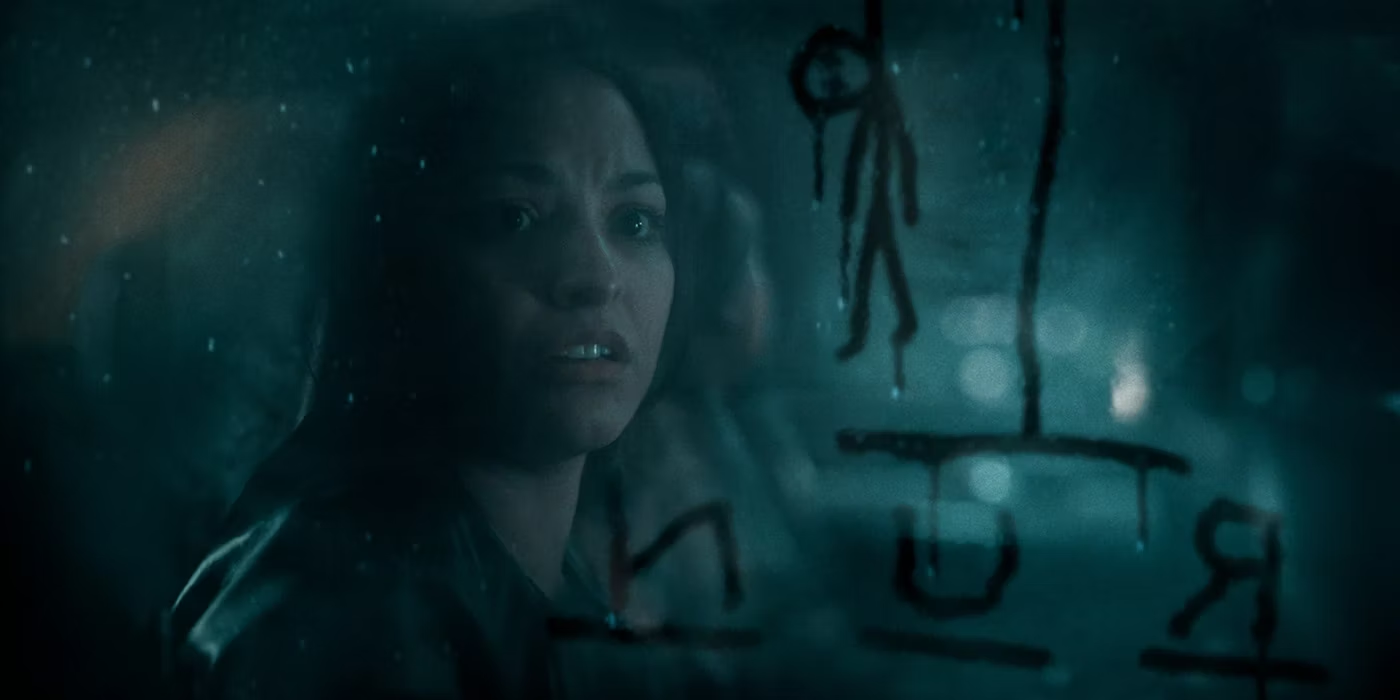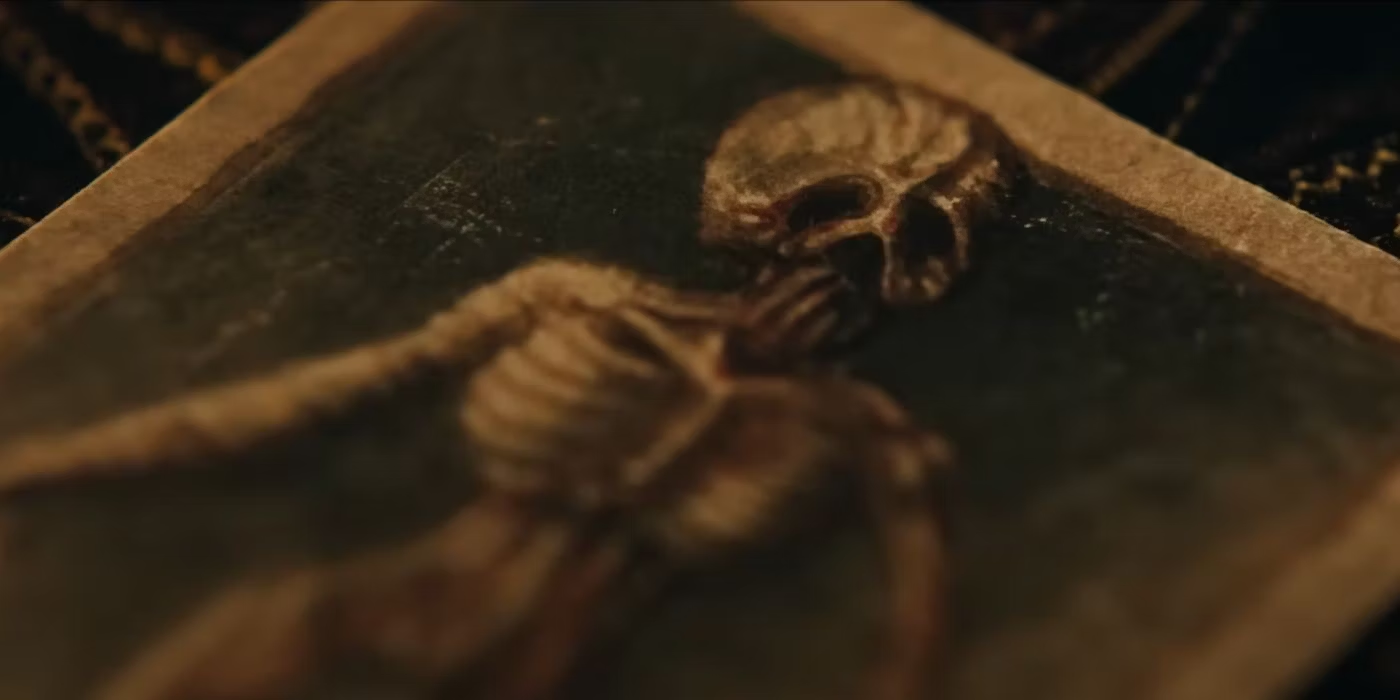{Movie Review} This Whole Deck’s Kinda Strange: The Monsters and Misadventures of Tarot (2024)
“I think you’re trying to make sense of something and there’s no sense to make.”
There is a subgenre that exists unnamed (so far as I know) and largely unexamined in modern horror cinema. In it, groups of usually young adult protagonists – the same age as its ostensible target audience – are menaced and picked off by a supernatural force or curse that operates according to reliable yet arbitrary mechanics. Examples plucked from memory more or less at random include Stay Alive (2006), Ouija (2014), Wish Upon (2017), Truth or Dare (2018), Polaroid (2019), The Puppetman (2023), and even movies that you might not immediately think to include such as It Follows (2014) and the Final Destination films, as well as outliers like Smile (2022).
Probably owing their genesis to the surge of “J-horror” movies of the early 2000s, these films have since developed their own structure, set of tropes, and even look and feel that remains relatively consistent across multiple directors and throughout more than two decades. Despite this, they rarely get much respect, as has long been the case with material that is aimed at young adult audiences, which tends to only get a critical reassessment after the people who grew up with it are old enough to start occupying positions of critical authority themselves. (See the contemporary critical reaction to the early slasher boom which was essentially the ancestor of these kinds of films – Nightmare on Elm Street could be one fully formed.)
Sometimes these flicks deserve more respect than they get. And, as with any subgenre, sometimes they don’t. Tarot sadly falls into that latter category.

Now, for starters, I’m a sucker for these kinds of goofy movies, even when they aren’t good. But the reason I was sitting in a theater to watch Tarot truly had nothing to do with the movie itself or its unspoken subgenre. The reason I was watching Tarot is one name – a name that you may not even see anywhere in the credits, unless your eyes are quicker than mine.
Trevor Henderson has been a friend for years and has been spending those years refining a unique and immediately identifiable style of art and creature design – one that lends itself perfectly to this kind of project. Which is why it was so exciting when he announced on social media that he had done the concept art for all of the monsters in Tarot.
Unfortunately, the monsters probably work better in concept than execution much of the time, in this case, even while Trevor’s designs are the place where Tarot comes the closest to standing out from a crowd of similar films. If they had been used better on screen, they could probably have elevated the film to… perhaps not iconic status, but certainly something more memorable.

You can see the potential in the rare scene when one of the monsters is given enough screen time to do something other than screech and rush at the camera. When the Fool is waiting across the street from Jacob Batalon’s character, for example, or the entire sequence with the Magician, the only monster who really gets a full set piece, which feels like it could have been lifted from something caught midway between Insidious and Dead Silence.
As it is, the monsters are probably shown to their best effect onscreen in the form of the film’s unique deck of tarot cards, illustrated by Richard Wells from Trevor’s designs.
Nor is Trevor’s involvement the only interesting wrinkle in Tarot’s pedigree. Though it is the feature debut of writer/director pair Spenser Cohen and Anna Halberg (more about that in a minute), it’s ostensibly based on a 1992 book called Horrorscope by Nicholas Adams, who also gets a writing credit here.
I’ve never read Horrorscope, but a little online sleuthing suggests that it concerns a (non-supernatural, as near as I can tell) serial killer who selects his victims according to the Zodiac. Which makes a kind of sense, though not in relation to the film we actually see. Human stalkers were the threats du jour in these kinds of teen horror books in the early ‘90s, just as mechanistic curses have become the go-to in films like this today. It makes sense that a book from 1992 would have been one thing, and a movie from 2024 something else entirely, though how we got from there to here is a behind-the-scenes story that I would be interested in hearing.

That’s all the intriguing stuff that went into the making of Tarot, though. As for the movie itself… let me put it this way: One half of that writer/director combo I mentioned was also one of the writers credited on Moonfall (2022) and Expend4bles (2023), and that fact is not at all surprising after you’ve seen Tarot. That may tell you all you need to know.
This is the type of film that jams together tarot and astrology into a TikTok-ready, “Easy Bake Coven” slurry. The kind of movie that is based entirely around tarot and yet gets almost everything it says about it wrong. A PG-13 picture that reserves its one F-bomb for a pre-credits punchline that feels like it’s reaching for (but landing nowhere near) being a Twitter hashtag. A flick where someone earnestly says words like, “(So-and-so) was an earth sign and he was found in the dirt.”
It features perhaps the most egregious example yet put on film of a trope that is present in virtually every supernatural horror movie since the dawn of the internet: the scene where the characters search a common occult term of some kind, and immediately find a result that is both accurate and directly relevant to their situation – a scenario that is given an added dose of hilarious surreality here by the fact that the author of said website is also directly tied to the cursed deck of tarot cards and happens to live nearby so that she can provide an absolute wall of exposition to our beleaguered twentysomethings.
Tarot is, as you might have been able to extrapolate by now, not the movie to rehabilitate this nameless subgenre. If you have a good time with the film, it will be because of – not despite – its unremitting silliness. But it was great to see some of Trevor’s monsters up on the big screen, and there’s nothing wrong with a very silly slumber party horror movie now and again, if you know that’s what you’re getting into.

Besides his work as Monster Ambassador here at Signal Horizon, Orrin Grey is the author of several books about monsters, ghosts, and sometimes the ghosts of monsters, and a film writer with bylines at Unwinnable and others. His stories have appeared in dozens of anthologies, including Ellen Datlow’s Best Horror of the Year and he is the author of two collections of essays on vintage horror film.
